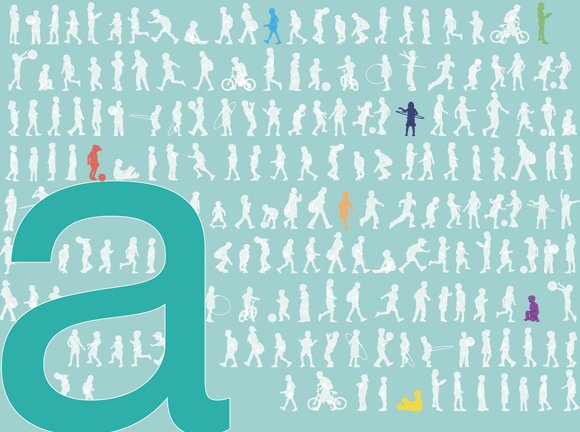by Pat McSparin // Fall 2010
 Autism spectrum disorder (ASD) raises many questions, and an important part of finding the answers is recognizing that every child with autism is different. Timothy Buie (M.D. ’84), Michele Kilo (M.D. ’84) and current Conservatory master’s candidate Alaine Reschke-Hernandez (B.A. ’04) — have accepted the challenge of finding effective ASD treatments.
Autism spectrum disorder (ASD) raises many questions, and an important part of finding the answers is recognizing that every child with autism is different. Timothy Buie (M.D. ’84), Michele Kilo (M.D. ’84) and current Conservatory master’s candidate Alaine Reschke-Hernandez (B.A. ’04) — have accepted the challenge of finding effective ASD treatments.
A 2009 Centers for Disease Control (CDC) report showed an increase of 57 percent in the average prevalence of ASDs at study sites, which meant an average of 1 in 110 children in the United States in 2006 was classified as having ASD. This increase has brought ASD to the center of public awareness, and more physicians and care providers are searching for effective methods of treatment.
According to the CDC, a “spectrum disorder” affects each person differently. While people with ASD share similar symptoms, such as problems with communication and social interaction, there can be vast differences in the severity and nature of the symptoms. “Autism is a collective umbrella,” says Kilo. “It’s a collective group of characteristics that you have to meet in order to accurately be diagnosed with one of the autism spectrum disorders. But that’s about as much commonality as these kids have. There’s a saying: when you’ve seen one child with autism, you’ve seen one child with autism.”
Kilo serves as assistant professor of pediatrics at the UMKC School of Medicine and has been with Children’s Mercy Hospital and clinics in Kansas City, Mo., since beginning her residency in general pediatrics in 1984. She quickly found developmental behavior pediatrics to be her calling.
“I knew that the best thing for me was making a long-term connection with people,” she says. “(Developmental behavior pediatrics) is a field that was very new at the time, and it allowed me the opportunity to get to know babies when they’re very young, and to work with them as they become children, as they become teens, as they become young adults, to become a part of their family and to follow their progress.”
Buie found his way into autism research and care by a different route: through the stomach. He specialized in pediatric gastroenterology, completing his fellowship at Yale-New Haven Hospital. He had a private practice for eight years before accepting his present position as associate in pediatrics at Boston’s MassGeneral Hospital for Children. Buie was also recently named assistant professor of pediatrics at Harvard University. He says his focus on gastrointestinal disease (GI) in children with ASD was not entirely by choice.
“When families see their kids getting help, you get drafted,” he says. “As people brought in their autistic kids with GI, I just became the guy to go to. And it became evident that these kids were being ignored. They couldn’t talk, but they had a lot of pain. Many treatments they received made them feel better, but it didn’t fix the condition.” Buie says he left private practice in 1998 to better serve children with ASD who suffered from GI problems. The Autism Society of America (ASA) recognized his dedication by presenting him with its 2009 Professional of the Year award.
Reschke-Hernandez says she answered the same call that Kilo and Buie heard, but as a musician, she traveled a different route to help autistic children. “I’ve been a music therapist for six years now, and all six years I worked with children with autism,” says Reschke-Hernandez, a board certified music therapist. “My full-time job when I finished my bachelor’s was in Florida public schools. I saw about 150 children a week with autism. I was a little scared at first because I hadn’t worked with many children with autism. I ended up loving it.
“In those three years of working with so many kids,” she says, “I saw so many things happen through music therapy that weren’t happening through other therapeutic areas. Other people working with the kids were saying, ‘This child has never done this before’ and ‘How are you getting them to do that?’ I just became really curious about why? What makes it happen?”
Reschke-Hernandez says that it was her love of working with the children combined with not understanding autism that led her to work toward her master’s degree in music therapy. Her paper, titled “A history of music therapy treatment interventions for children with autism,” will be published in The Journal of Music Therapy this fall.
